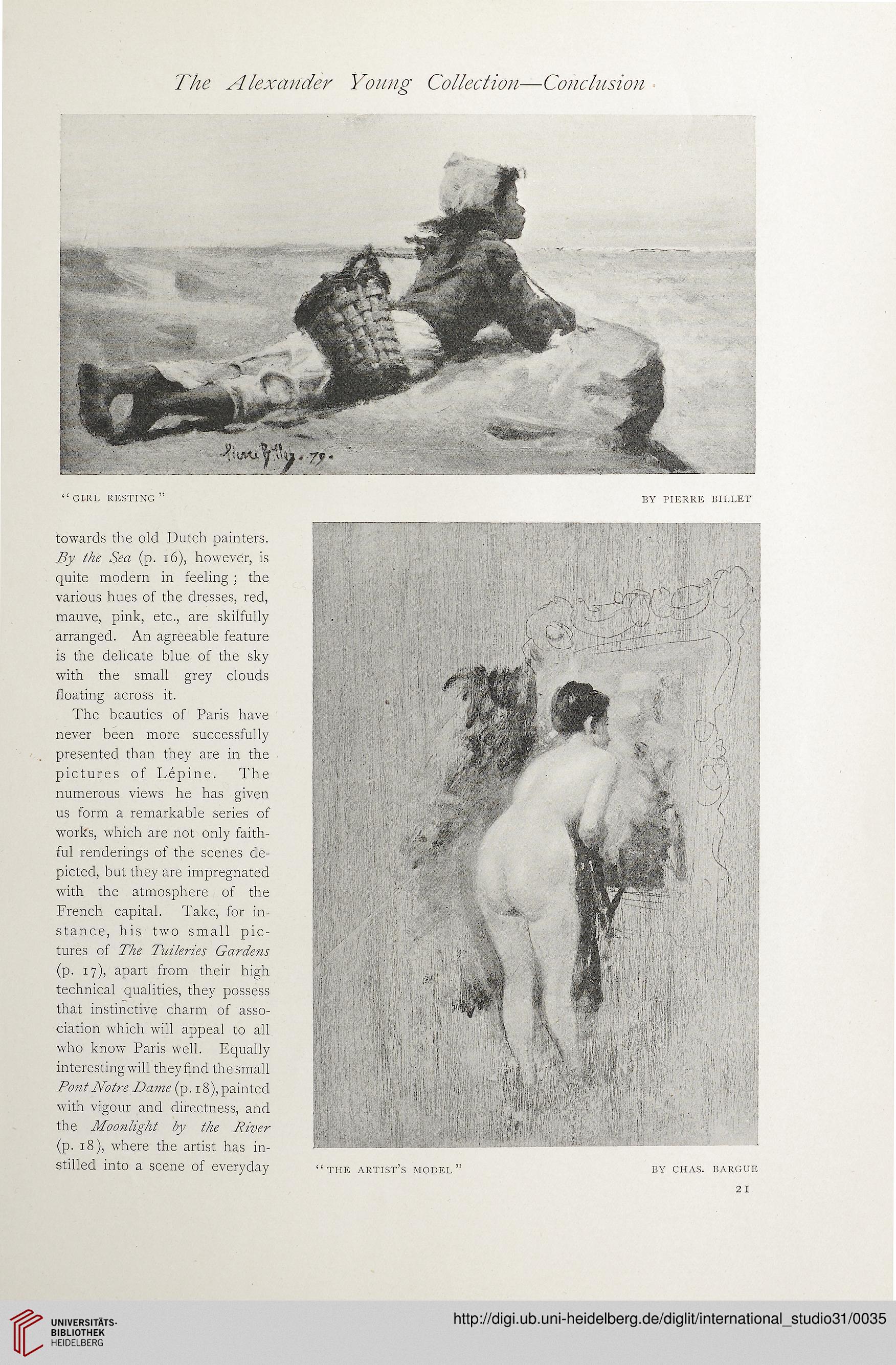The Alexander Young Collection—Conclusion
J?',
“ GI-RL RESTING” BY PIERRE BILLET
towards the old Dutch painters.
By the Sea (p. x6), however, is
quite modern in feeling; the
various hues of the dresses, red,
mauve, pink, etc., are skilfully
arranged. An agreeable feature
is the delicate blue of the sky
with the small grey clouds
floating across it.
The beauties of Paris have
never been more successfully
presented than they are in the
pictures of Lepine. The
numerous views he has given
us form a remarkable series of
works, which are not only faith-
ful renderings of the scenes de-
picted, but they are impregnated
with the atmosphere of the
French capital. Take, for in-
stance, his two small pic-
tures of The Tuileries Gardens
(p. 17), apart from their high
technical qualities, they possess
that instinctive charm of asso-
ciation which will appeal to all
who know Paris well. Equally
interesting will they find the small
Pont Notre Dame (p. 18), painted
with vigour and directness, and
the Moonlight by the River
(p. 18), where the artist has in-
stilled into a scene of everyday “the artist’s model” by chas. bargue
J?',
“ GI-RL RESTING” BY PIERRE BILLET
towards the old Dutch painters.
By the Sea (p. x6), however, is
quite modern in feeling; the
various hues of the dresses, red,
mauve, pink, etc., are skilfully
arranged. An agreeable feature
is the delicate blue of the sky
with the small grey clouds
floating across it.
The beauties of Paris have
never been more successfully
presented than they are in the
pictures of Lepine. The
numerous views he has given
us form a remarkable series of
works, which are not only faith-
ful renderings of the scenes de-
picted, but they are impregnated
with the atmosphere of the
French capital. Take, for in-
stance, his two small pic-
tures of The Tuileries Gardens
(p. 17), apart from their high
technical qualities, they possess
that instinctive charm of asso-
ciation which will appeal to all
who know Paris well. Equally
interesting will they find the small
Pont Notre Dame (p. 18), painted
with vigour and directness, and
the Moonlight by the River
(p. 18), where the artist has in-
stilled into a scene of everyday “the artist’s model” by chas. bargue




